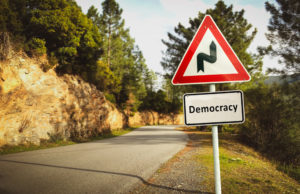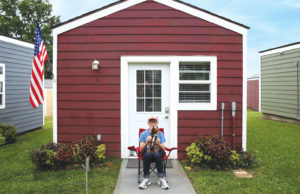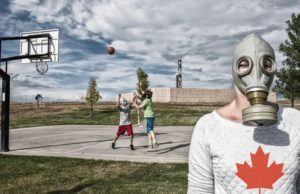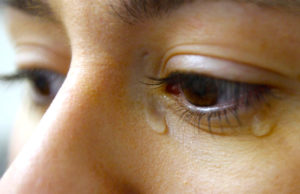Since the devastating
she’s afraid to go into her house. When it rains, she spends the night
on her feet, huddled under an awning. Her family and neighbors do the
same, having converted their street into a block-long campsite of
pitched tents and mattresses.
Yet not a single house there collapsed in the quake.
“Two years from now, if the earthquake hasn’t killed me, you will find me right here in front of my house,” Achedou said.
About 1.3 million people are living outdoors in
sprawling camps or in front of their houses since a 7.0-magnitude
earthquake killed more than 200,000 people and toppled thousands of
buildings. More than 100 donors will meet at
Experts say 300,000 to 400,000 of
homeless quake survivors have undamaged houses — and show no signs of
going back indoors. They, like Achedou, are simply too afraid to go
back inside.
“If you had been here and seen how the concrete
shook, you would never sleep inside under concrete again,” said
Achedou’s 14-year-old daughter Claire, who ran from the house naked
during the January quake.
As the rainy season approaches and weeks stretch
into months, the same experts who had publicly advised Haitians to
sleep outside are now saying time has come to go back indoors. The
Haitian government, aided by the U.S. military, launched an ambitious
project to evaluate every standing house before hurricane season.
But even as more and more houses are tagged “green” for safe, more and more people are sleeping under the stars.
Undamaged hospitals are empty. The public hospital’s
maternity ward is desolate and unused as women give birth outside in
tents and even pickup trucks. The emergency room shows not a single
cracked wall, yet Haitian doctors refuse to go inside.
So far, U.S.-trained engineers have surveyed 10,000 homes.
“More than 40 percent of them are safe, but empty,” said U.S. military engineer Col.
who oversees U.S. military engineers and contractors on the joint task
force here. “The other day I met a lady with three small children whose
family was sleeping in two tents, and her house was perfectly fine. I
told her: ‘What if I come and I spend the night here? Would you go
inside then?’
“She said: ‘The day you sleep here, the earthquake would not happen. It would happen the next day.'”
Cintron said experts hope to evaluate 100,000 homes
by May. If 40 percent of those residents would go back home, it could
alleviate overcrowding in sprawling camps, where rains have begun to
wreak havoc.
“They absolutely need to get back into their homes,” said
“One thing we found is that people did not trust
Haitian engineers. They’d say: ‘This is the same person who built my
house. Why should I trust him when he tells me that it’s safe to be
back inside?'”
DesRoches, who is Haitian-American, spent nine days in
“In some cases, they were completely safe,” he said.
“There are 30- to 50-bed hospitals that have no damage that are empty.
People are really afraid.”
Mines and Energy bureau, acknowledges that he has been on radio
stations telling people to sleep outdoors.
of another 7.0 earthquake, and recommended people sleep outdoors until
Wednesday. Prepetit said he will sleep outside until April, but is
unwilling to take on the responsibility of telling everyone else to do
the same.
“The decision to go back inside is a personal
decision,” he said. “There are aftershocks, and no one can tell when
they will stop. Even if people do not feel it, we have tools that show
the earth is still moving. There are houses that are not damaged, but
that doesn’t mean that another earthquake will not topple them.”
is still at risk for quakes as large as a 6 on the Richter scale, so
people should stay outside until an engineer declares their home safe.
“Imagine that the government says it’s OK to go back
home and then there’s another earthquake,” he said. “Who will the
people blame?”
April rains, he said, will force people to go back inside when they realize their camps are more dangerous than their houses.
USGS senior science advisor
“This is the fourth-deadliest earthquake we’ve ever
had, and the deadliest in the hemisphere,” he said. “You can’t really
argue with people who are afraid. People are traumatized, even if going
back home is their best option.”
is still at risk, but decades down the road. Rather than focus on
immediate threats, Haitians need to focus on bringing structures up to
international seismic code.
“Most experts agree that the chances of a major aftershock are much reduced,” Dixon said. “If I were living in
and my building had a green tag, I would go live in it — but I’d make
plans for bringing it up to code in the next year to 18 months.”
Yet even USGS advisories say
stands a 95 percent chance of enduring an earthquake that measures 5.0
on the Richter scale in the next year. A quake that strong would be
“widely felt” and “has the potential to cause additional damage,
particularly to vulnerable, already damaged structures,” according to
the USGS.
“Nobody can ever tell us we are completely safe,”
said Wilner Demevil Emil, who sleeps outside his undamaged apartment
building with dozens of neighbors. “Being outside is hard, but death
and being under rubble are no good either.”
He said the magnitude 8.8 earthquake in
Some people insist they’ll go back when the experts
say it is safe, but argue that the government is taking too long to do
inspections. DesRoches agrees that not enough engineers are working on
the ground.
“There are some brave guys who sleep inside, but as
soon as they hear any kind of noise, they go running,” said Leafard
Bellevue, 35, an unemployed electrician who is anxious for an engineer
to visit his concrete home.
“I am only brave in the daytime.”
———
(c) 2010, The Miami Herald.
Visit
Distributed by McClatchy-Tribune Information Services.













